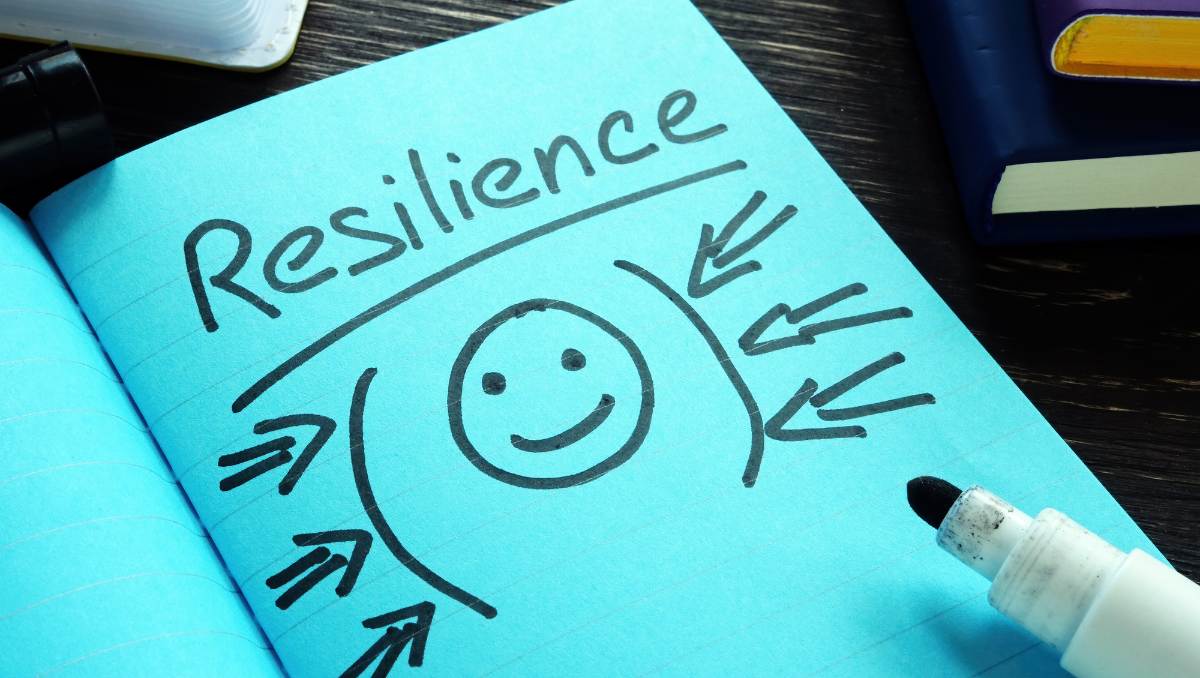Bounce-back-ability. Better known as resilience…
But what does the word resilience mean to you?
The Oxford English Dictionary (OED) explains it as ‘The capacity to withstand or to recover quickly from difficulties. A simple enough explanation, but one that doesn’t begin to tell the whole story.
Resilience can obviously mean different things to different people, depending on their age, upbringing, family dynamic, profession, gender etc.
Early in life, it can be having the ability to stand up to bullies, to process and adjust after a divorce, a relocation, new surroundings, new school, new friends … no friends or maybe bouncing back after failing to pass an exam. In adulthood, the ability to positively process not getting into the chosen university, or that dream job or perhaps a relationship not panning out as hoped. In fact, avoiding the negative impacts of anything and everything that might not go as expected.
Hopefully, this broad range of hundreds of life scenarios illustrates the type of instance where resilience is necessary – if not vital – to live a balanced, happy and successful life.

SO WHAT EXACTLY IS RESILIENCE?
So, what exactly IS resilience… really? How do you acquire/build it? How can you use it, and how can it have a positive impact on your life?
Well, as the OED states, resilience is the ability to overcome adversity and bounce back to a balanced and productive state. Whilst some people are naturally more resilient than others due to a whole host of elements such as genes, body chemistry and an inherently positive outlook, the good news is that with a bit of education and training, ANYONE can develop resilience and use it to improve their lives.
“BUT JUST HOW DO I GO ABOUT MAKING SUCH A FUNDAMENTAL AND LIFE CHANGING CHANGE!!?” I hear you say.
By beginning to foster a change in attitude and adhering to the following ten simple rules.

1. Positivity is the future!
By creating a more positive – and optimistic – outlook on life. Eliminating the negative head-chatter that is the cause of so much fear, anxiety and under-achievement.
Believe it or not, life is supposed to go ‘as planned’. Think of that family day out you plan and enjoy; holidays; trips to work; work projects themselves. They generally go as planned, even with the odd hiccup (which is where resilience comes in), because you do everything you can to make them happen (rather than to go wrong). Focusing on things going well rather than awry can become a habit that will improve your mood, outlook on life and resilience as you realise negative outcomes are the exception rather than the rule.
By ensuring that you surround yourself with positive stimuli (reading material, TV, Radio etc.) and positive people, those that are confident, supportive, optimistic, hardworking and motivated, reduce negative intrusion and create the type of energy that propels us forward rather than holds us back.
“The pessimist sees difficulty in every opportunity. The optimist sees the opportunity in every difficulty.” Winston Churchill.

2. Reframing (Cognitive restructuring)
Cognitive restructuring – or reframing – is a process of recognising, challenging and changing cognitive distortions and negative thought patterns.
Resilient people are able to look at negative situations in a realistic way that doesn’t focus on blame or brooding over what can’t be changed. Rather than viewing adversity as insurmountable, reframe those thoughts to look for small ways – and adjustments – that will start to tackle and reduce the problem.

3. Seeking support
Talking about difficulties in one’s life won’t make those issues disappear, but a problem shared is a problem halved. Sharing a problem with a supportive/trusted friend or loved one can let you know – or remind you – that you have someone in your corner. This in itself provides a more substantial unity (than just one’s-self) and additional resource/support in helping you address an issue, which helps create resilience. Discussing problems with the right people can provide fresh insight and a new perspective on a dilemma that can often be all encompassing, helping one move towards a satisfactory solution.

4. Focusing on the controllables and embracing change.
When faced with a problem or crisis, one can feel overwhelmed by things that are out of our control. The past is the past, so it is essential to focus on what we can directly impact and change rather than dwell on what we can’t. Regardless of how serious the issue – or crisis – appears to be, taking realistic steps, no matter how small, to improve the situation can begin the process of gaining control and thus (a degree of) surety and resilience.
Maintaining flexibility in one’s thinking in all areas of our lives is also important. Being open to change – and less rigid in our approach to life – means we are less likely to be caught off-guard when change occurs.
“Change is the only constant in life”. Heraclitus.

5. Understanding yourself and managing stress.
Developing healthy stress-management *habits is an excellent way to increase overall resilience. If stress can be controlled, thinking is much clearer, as is the ability to make the right decisions to gain control over and resolve the issue/s in hand.
Being in good physical condition generates an enormous amount of positive energy. We are spiritual, physical, mental and emotional beings; if our physical body is not healthy, it directly impacts our emotional, mental and spiritual health. When we are physically active, our bodies produce feel-good chemicals that help medicate stress, anxiety, and other negative states. Be kind to you!
*These could include behaviours that assist in maintaining general good health, such as exercise, sufficient rest and a healthy diet; practising mindfulness and meditation; conscious – diaphragmatic – breathing etc.

6. Finding a Purpose.
Finding a purpose, be it a hobby, activity, club or perhaps volunteer work, provides a reason to ‘do’. As well as the obvious benefits of giving stimuli, focus, direction and distraction, a purpose can also provide social interaction and help improve social skills and character building. All elements that help build resilience.

7. Establishing – and achieving goals.
Setting goals – as well as milestones within those goals – is a crucial part of creating resilience. Formulating a goal that you are passionate about, committing to it and working (hard) to achieve it (and succeeding) are all key factors in building the belief that fuels the development of resilience.
In setting goals, it is vital that they are realistic and achievable and that you target something you REALLY want so that you are not deterred when the going gets tough (which is likely in any endeavour). It is also important that you visualise – and FEEL – what it will be like when you achieve the goal. After all, feelings drive thoughts that drive actions, so fuel the fire and the goal with positivity. As you achieve goals and create and develop problem-solving strategies, you learn to handle – and more importantly, KNOW you can handle – an increasing number of different scenarios. All the while building the belief that you are strong and capable of achieving whatever you put your mind to.

8. Have belief in yourself!
Belief in one’s ability to handle situations, complete tasks, and achieve goals is vital in creating resilience. It is built up of many factors, including experience, confidence, self-awareness and a positive attitude. Establishing goals and achieving them, applying a solid work ethic, and being passionate about your work fuels that belief.

9. Effective Communication
Really concentrating on what you say, how you say it, and to whom you’re saying it breeds assurity and confidence, which are critical components in creating resilience. Clarity of communication, both externally and internally, directly influences feelings which creates thoughts and delivers actions.
Likewise listening. I mean REALLY (active) listening to what others say builds rapport, earns trust and is a significant factor in the relationship-building process that is crucial in developing resilience.

10. Expressive writing
It has been said that anxiety is ‘suppressed creativity’. If this helps alleviate anxiety, then it helps build resilience, so it is important that one’s creativity has its release. Be it in expressive or creative writing or any other area of expression such as acting, sport, music and beyond.
Looking after yourself and filling your life with as much of what you love will help you develop the authentic you; the one you love and want to prosper – and following these steps to create the resilience you need to bounce back when things don’t go to plan, is the key to a happy and fulfilled life.

